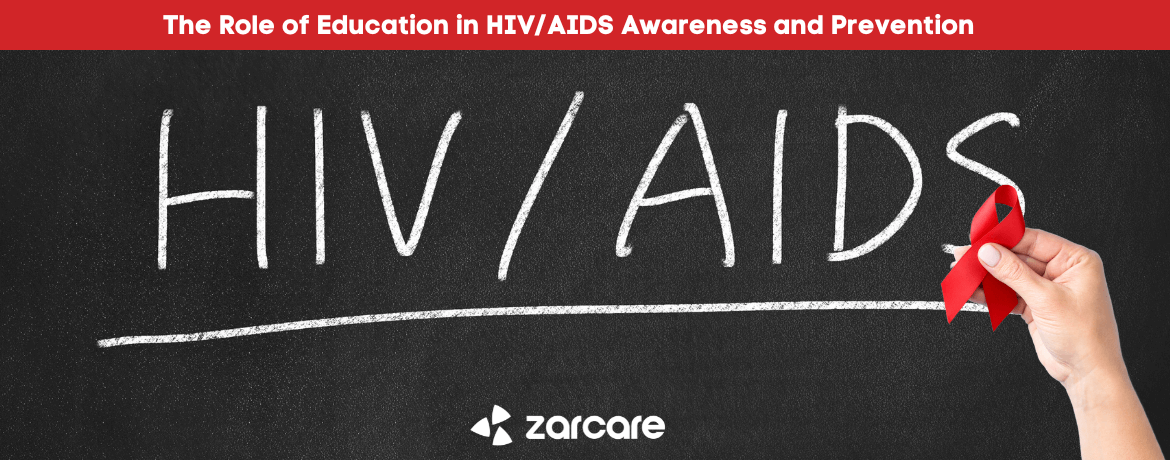The Role of Education in HIV/AIDS Awareness and Prevention

Education plays a critical role in the fight against HIV/AIDS by promoting awareness, reducing stigma, and encouraging preventive measures. As a public health challenge that has persisted for decades, HIV/AIDS requires a comprehensive approach, and education serves as a cornerstone for effective prevention strategies. This article explores how education can influence HIV/AIDS awareness and prevention, particularly in vulnerable communities. One of the most significant contributions of education is its ability to disseminate accurate information about HIV/AIDS. Misinformation and myths about the disease remain widespread in many regions, contributing to fear, stigma, and discrimination. Educational programs, whether delivered in schools, workplaces, or community settings, provide a platform to share factual information about how HIV is transmitted and how it can be prevented. For example, comprehensive sex education in schools equips young people with knowledge about safe sexual practices, including the use of condoms and the importance of regular testing. Such programs help individuals protect themselves and empower them to advocate for healthy behaviours in their communities. In areas where formal education systems may be lacking, non-governmental organisations (NGOs) and community health workers often play a vital role in raising awareness through workshops and campaigns. The stigma surrounding HIV/AIDS remains one of the most significant barriers to prevention and treatment. Many people living with HIV face discrimination, which can discourage them from seeking testing or treatment. Education is a powerful tool to challenge misconceptions and foster empathy and understanding. By incorporating HIV/AIDS education into broader health curricula, schools and institutions can normalise discussions about the disease. This helps reduce the shame and fear often associated with it. Additionally, stories and testimonials from people living with HIV can humanise the issue, breaking down stereotypes and encouraging more supportive attitudes. Education is instrumental in promoting behaviours that reduce the risk of HIV transmission. Key preventive measures include the use of condoms, regular testing, antiretroviral therapy (ART) for those who are HIV-positive, and pre-exposure prophylaxis (PrEP) for those at high risk. However, these strategies are only effective if individuals are aware of them and understand their importance. Community-based education programs have successfully promoted preventive measures in underserved areas. Peer education models, where trained individuals from the community share information, have proven effective in reaching populations that might not engage with traditional health services. These programs often address cultural and social barriers, making the message more relatable and impactful. Education also plays a crucial role in addressing the gender inequalities that often exacerbate the spread of HIV/AIDS. Women and girls in many parts of the world face disproportionate risks due to factors like limited access to education, economic dependency, and gender-based violence. Empowering women through education can significantly reduce their vulnerability. For instance, educated women are more likely to make informed decisions about their health and negotiate safer sexual practices. They are also better positioned to access resources and services, including HIV testing and treatment. Programs that combine education with economic empowerment, such as microfinance initiatives, have shown promise in reducing HIV risk among women. Specific populations, such as men who have sex with men, sex workers, and intravenous drug users, are at higher risk of HIV infection. Tailored educational programs that address these groups’ specific needs and challenges are essential. These programs often require a nuanced approach, as stigma and discrimination can make it difficult for individuals to access mainstream health services. Collaboration between governments, NGOs, and community leaders is crucial in these cases. Mobile clinics, harm reduction initiatives, and targeted outreach campaigns can ensure that vulnerable populations receive the education and resources they need to protect themselves. Technology has become a valuable tool in HIV/AIDS education and prevention efforts. Social media, mobile apps, and online platforms offer innovative ways to reach diverse audiences with tailored messages. For example, mobile health apps can provide reminders for medication adherence, offer information about nearby testing centres, and deliver educational content. Social media campaigns can raise awareness and combat stigma on a larger scale, engaging young people who might not otherwise access traditional forms of education. Education is a powerful weapon in the fight against HIV/AIDS. By promoting awareness, reducing stigma, encouraging preventive measures, addressing gender inequality, and reaching vulnerable populations, educational initiatives can significantly impact the global effort to combat this epidemic. As the world moves closer to the goal of ending AIDS as a public health threat, investing in education remains an essential strategy for achieving lasting change. At Zarcare, we are committed to ensuring quality healthcare by providing compassionate, innovative, and accessible solutions that empower individuals to lead healthier lives.Promoting Awareness
Reducing Stigma
Encouraging Preventive Measures
Addressing Gender Inequality
Reaching Vulnerable Populations
The Role of Technology
Conclusion
